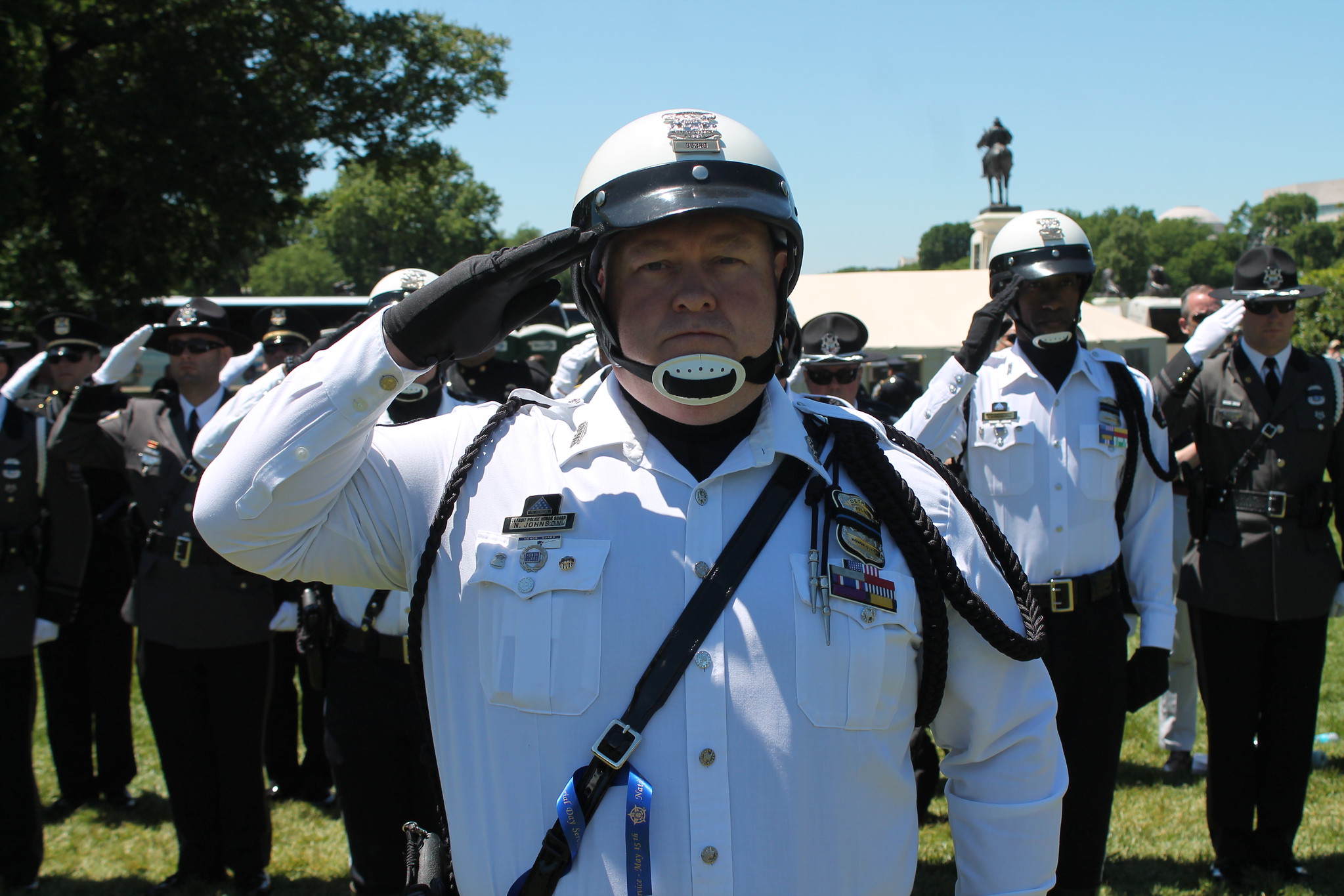Policing With Less and Less Policing
A review of Michelle Wilde Anderson, “The Fight to Save the Town: Reimagining Discarded America” (Simon & Schuster, 2022).

Published by The Lawfare Institute
in Cooperation With

A review of Michelle Wilde Anderson, “The Fight to Save the Town: Reimagining Discarded America” (Simon & Schuster, 2022).
***
What happens to already strapped communities when those with the means to do so move out; when governmental services diminish as property values fall and tax revenues plummet, and when outside help—whether in the form of private investment or redistributive governmental funding—is either not forthcoming or carries its own costs? In her incisive, humane, and quietly inspiring book, “The Fight to Save the Town: Reimagining Discarded America,” Michelle Wilde Anderson—a Stanford law professor (and friend)—pushes readers to consider these communities of concentrated disadvantage, asking, “What happens when local governments and other shared institutions empty out in places where people still live?”
Anderson focuses on four places that differ dramatically in urbanization, race composition, and politics: Josephine County, Oregon—a predominately white, rural community, abandoned by the timber industry and beset by the opioid epidemic and violence relating to meth and alcohol addiction; Stockton, California—an extraordinarily diverse, “purple” city whose dire finances drove it into bankruptcy and left it ill equipped to deal with spiking homicide rates; Lawrence, Massachusetts—an early industrial hub where, now, a growing Latinx population struggles to get out of the low-wage rut of service jobs and to address the regional opioid problem; and Detroit, Michigan—where the mortgage foreclosure crisis of the Great Recession slammed a predominantly Black population and forced the city into bankruptcy.
Yet Anderson doesn’t stop with an analytically rich and deeply disquieting exploration of the plights of these communities—one that draws on more than 250 interviews with residents and leaders. Even as she chronicles “the human wounds left by decades of deep cuts to local government,” she finds narrative lines of resilience, promise, and strategic development as residents in each community “fight to save their town.” And she gives readers a clear-eyed picture of what change looks like—not the hypothetical change of idealistic transformation, but the real progress, and reservations about it, that dedicated people and the institutions they create or foster can accomplish.
This is not a book exclusively about policing and public safety: The stories Anderson tells about Lawrence and Detroit, once gateway cities to the middle class for immigrants and Black Americans, respectively, are about education and limiting tax and mortgage foreclosure. But for me, and I suspect many Lawfare readers, the book offers valuable lessons about how a struggling community can tap its own resources to promote public safety, but also the limits of those efforts. “The Fight to Save the Town” gives readers a sense of the policy territory that lies between overly idealistic talk of abolition and unimaginative adherence to current police practices. It also gives a sense of what resiliency amid the lived experience of progress in the face of extremely challenging conditions feels like.
Addressing Trauma in Stockton
Like many others, I often find a maddingly lack of clarity in calls to “defund the police.” Yet as Jessica Eaglin and others have noted, challenges to the magnitude of police funding and questions about how public safety can best be attained can spark needed interrogation of policing today and the recognition that, for example, additional police funding won’t necessarily increase homicide clearances without community cooperation. In some communities, that pressure has arisen from activism and rhetoric. In Stockton, California, it was also driven by dire financial necessity.
Anderson recounts how Stockton’s mounting debt payments and falling revenue pushed it into bankruptcy in 2012, even as violent crime soared and homicide rates increased to record highs. Deep cuts to the police led to painful triage—a focus on homicides came at the expense of protecting the poorest neighborhoods from armed drug dealers. Emerging from bankruptcy, and under the leadership of its first Black mayor, Michael Tubbs, Stockton, with increasing buy-in from the police chief and district attorney, began to look beyond immediate responses to violence and toward a far broader approach—one focusing on the role that childhood adversity was playing in that violence. Guided by public health assessments and spurred by community advocates, Stockton’s leaders sought to address the intergenerational violence and toxic stress that afflicted many of its residents, and to move beyond a “police-centered view of public safety.”
Anderson doesn’t hide the remaining challenges. Tubbs lost his reelection bid in 2020, and, as in all too many cities, the homicide rate rose during the coronavirus pandemic. The book covers only up to 2020, and we read this summer of the new violent crime challenges facing Stockton’s first Black police chief and his understaffed force, and how recruiting for that force is stymied by the relatively low pay the city offers. Still, the chief maintains that “the best way to hit criminal organizations is to provide resources and opportunities to at-risk youth.” And studies of the Advance Peace program—of outreach and trauma treatment—in Stockton and elsewhere suggest not only a significant gun violence reduction effect before 2020, but one that continued during the pandemic.
It’s unclear whether policing in Stockton today really feels different to its residents. Or whether the effects of the city’s violence reduction programs are sustainable as administrations come and go. But Anderson offers her story as one of doing better with less—an all-things-considered source of hope for other communities.
Josephine and Self-Help
Josephine County, Oregon, also found itself in dire fiscal circumstances, but the radical divestment in policing that residents opted for was as much an ideological choice, according to Anderson, as a product of economic conditions—a decline in the timber industry and a shortfall in federal funding that, for a time, compensated for that decline. In the wake of the Great Recession of 2008, budget shortfalls required the elected sheriff to cut into the bone of his department’s budget. By 2014, the 911 dispatcher had no one to send to a woman reporting that her violent ex-boyfriend was trying to break into her home; the sheriff’s office could advise domestic violence victims with restraining orders only that they might “consider relocating to an area with adequate law enforcement.”
Yet between 2004 and 2016, drawing on anti-tax sentiment born of deep poverty mingled with libertarian ideology, Josephine voters rejected tax proposals to support law enforcement nine times. And that gives readers a look at what defunding can look like: a sheriff’s department falling from 85 to 28; detectives laid off; and minimal police response to domestic violence and property crimes, as well as to the auto thefts in a rural county where cars are critical to everyday life and to the armed robberies of the producers flourishing after Oregon’s legalization of recreational marijuana. The district attorney’s office faced massive cuts as well. Residents further reduced police capacity by giving only grudging cooperation when investigators arrived, perhaps in homicide cases, but not even reliably in those.
Anderson is careful to distinguish the “hollowing out of law enforcement” in Josephine from the kind of depolicing advocated by “defunding” advocates, whose vision generally entails alternative investment that would, as in Stockton, address deeper pathologies of poverty, racism, and mental illness. Yet she notes a commonality between Josephine’s choices and a progressive agenda: a desire to keep nonviolent crimes, addiction, and juvenile delinquency out of the criminal justice system and to minimize, if not end, the use of jails.
And she tells of another outcome embraced in Josephine and not precluded by progressive abolitionists: volunteer police groups, emerging out of a rural culture of armed self-defense. With these came the problems one might expect: ill-trained volunteers with little taste for the “procedural justice” niceties that Stockton police were learning. And self-selection that left ample room for the participation of white nationalist groups with anti-government agendas and links to the “patriot” movement. While Anderson highlights the risks that arise directly from policing by militia groups, Lawfare readers familiar with the material support of terrorism statute—and its targeting of those who knowingly assist a designated “foreign terrorist organization” even when the support is intended to go merely to that organizations’s humanitarian activities—will appreciate how, at least in the foreign context, to recognize an indirect risk. A group that gains legitimacy and popular support by delivering needed social services, like public safety, can draw on that support when pursuing more explicitly terrorist projects. That same concern should drive scrutiny of public safety contributions (which may look more like vigilante activities) by domestic terrorist groups.
The strand of progress and promise that Anderson pulls out of the Josephine story is the successful campaigning by the sheriff and others to sell a 2017 tax levy that would provide a modicum of support for 911 operators, police, and even jails (at least to lock up those apprehended by volunteer patrols). Indeed, some readers may find it refreshing to see law enforcement facing, and perhaps meeting, an ongoing burden of justifying its existence. Yet one need only look at reports from Josephine this summer to see the limits of such a regime, with the sheriff, lacking a sufficient permanent funding stream, planning public forums to explain how his department’s patrol division will be eliminated absent new funding.
Conclusion
“The Fight to Save the Town” is so much more than a policing book. Anderson offers a proof of concept for addressing the challenges facing the financially strapped communities she describes—identifying and embracing the efforts of insiders and thinking about how outsiders can support them. Yet it pushes readers to confront policing change in all its messiness and inadequacy, and to prepare them for both success and disappointment in the long road ahead. The idea of shifting some resources from policing to social services has considerable allure. But good policing that acknowledges the deeper causes of violent crime is far more expensive than many realize, and what will fill the vacuum left by less policing is often far more troubling.




